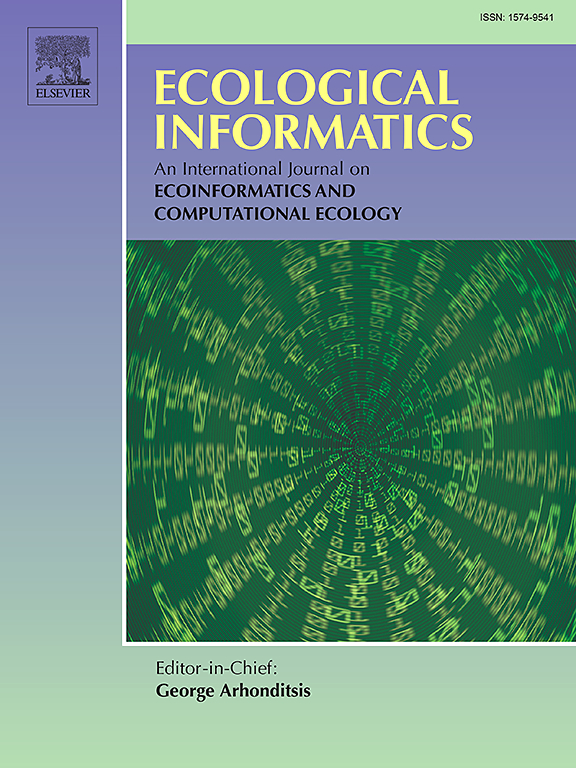时空水质数据重构:一个张量分解框架
IF 7.3
2区 环境科学与生态学
Q1 ECOLOGY
引用次数: 0
摘要
水质参数高频自动监测在富营养化湖泊管理中越来越受到重视。然而,水质数据集中的数据缺失仍然是一个持续的挑战,往往会影响数学模型和统计分析的可靠性。传统的插值方法无法充分捕获水质变量之间复杂的时空依赖关系,本研究提出了一种新的非负张量分解(NTF)模型,该模型通过有效地建模变量-地点-时间三元相互作用来重建缺失值。先前的研究结果表明,将偏差方案纳入NTF架构大大降低了欠拟合风险。利用这一见解,我们开发并严格评估了七个不同的有偏见的NTF变体。他们的多样化偏差项设计不仅提高了个体模型的性能,而且通过优势互补实现了高效的集成学习。为了验证所提出的模型,我们利用中国滇池的真实AHFM数据进行了综合实验,在不同的数据缺失情景下(20 - 80%的缺失率和1-4周的缺失间隔)。关键水质参数包括叶绿素-a浓度、水温、pH、溶解氧、电导率、浊度、化学需氧量、氨、总磷和总氮。结果表明,7种有偏NTF模型在所有缺失场景下均具有最优性能,均方根误差(RMSE)为0.2796±0.0041,平均绝对误差(MAE)为0.1611±0.0034,Nash-Sutcliffe效率(NSE)为0.9704±0.0009。与最先进的模型相比,这些方法在RMSE、MAE和NSE方面的一致性改进分别为3.42% - 30.74%、2.30% - 30.38%和0.20% - 3.22%。值得注意的是,7个模型的集合进一步提高了输入精度,RMSE为0.2409±0.0018,MAE为0.1384±0.0012,NSE为0.9768±0.0009。这些发现强调了偏倚增强的NTF框架作为分析高维监测数据的强大工具的潜力。本文章由计算机程序翻译,如有差异,请以英文原文为准。

Spatiotemporal water quality data reconstruction: A tensor factorization framework
Automatic high-frequency monitoring (AHFM) of water quality parameters has gained growing attention for managing eutrophic lakes. However, missing data in water quality datasets remains a persistent challenge, often compromising the reliability of mathematical models and statistical analyses. While traditional imputation methods fail to adequately capture complex spatiotemporal dependencies among water quality variables, this study proposes a novel nonnegative tensor factorization (NTF) model designed to reconstruct missing values by effectively modeling variable-site-time triad interactions. Previous findings indicate that incorporating bias schemes into NTF architectures substantially reduces underfitting risks. Leveraging this insight, we develop and rigorously evaluate seven distinct biased NTF variants. Their diversified bias term designs not only enhance individual model performance but also enable highly effective ensemble learning through complementary strengths. To validate the proposed models, we conduct comprehensive experiments using real-world AHFM data from Lake Dianchi, China, under various missing data scenarios (20–80 % missing ratios and 1–4 weeks missing gaps). The key water quality parameters include chlorophyll-a concentration, water temperature, pH, dissolved oxygen, electrical conductivity, turbidity, chemical oxygen demand, ammonia, total phosphorus, and total nitrogen. The results demonstrate the superiority of the seven biased NTF models, achieving optimal performance with a root mean squared error (RMSE) of 0.2796 ± 0.0041, mean absolute error (MAE) of 0.1611 ± 0.0034, and Nash-Sutcliffe efficiency (NSE) of 0.9704 ± 0.0009 across all missingness scenarios. Compared to state-of-the-art models, these methods yield consistent improvements of 3.42 %–30.74 % in RMSE, 2.30 %–30.38 % in MAE, and 0.20 %–3.22 % in NSE. Notably, an ensemble of the seven models further elevates imputation accuracy, attaining an RMSE of 0.2409 ± 0.0018, MAE of 0.1384 ± 0.0012, and NSE of 0.9768 ± 0.0009. These findings underscore the potential of bias-enhanced NTF frameworks as a robust tool for analyzing high-dimensional monitoring data.
求助全文
通过发布文献求助,成功后即可免费获取论文全文。
去求助
来源期刊

Ecological Informatics
环境科学-生态学
CiteScore
8.30
自引率
11.80%
发文量
346
审稿时长
46 days
期刊介绍:
The journal Ecological Informatics is devoted to the publication of high quality, peer-reviewed articles on all aspects of computational ecology, data science and biogeography. The scope of the journal takes into account the data-intensive nature of ecology, the growing capacity of information technology to access, harness and leverage complex data as well as the critical need for informing sustainable management in view of global environmental and climate change.
The nature of the journal is interdisciplinary at the crossover between ecology and informatics. It focuses on novel concepts and techniques for image- and genome-based monitoring and interpretation, sensor- and multimedia-based data acquisition, internet-based data archiving and sharing, data assimilation, modelling and prediction of ecological data.
 求助内容:
求助内容: 应助结果提醒方式:
应助结果提醒方式:


